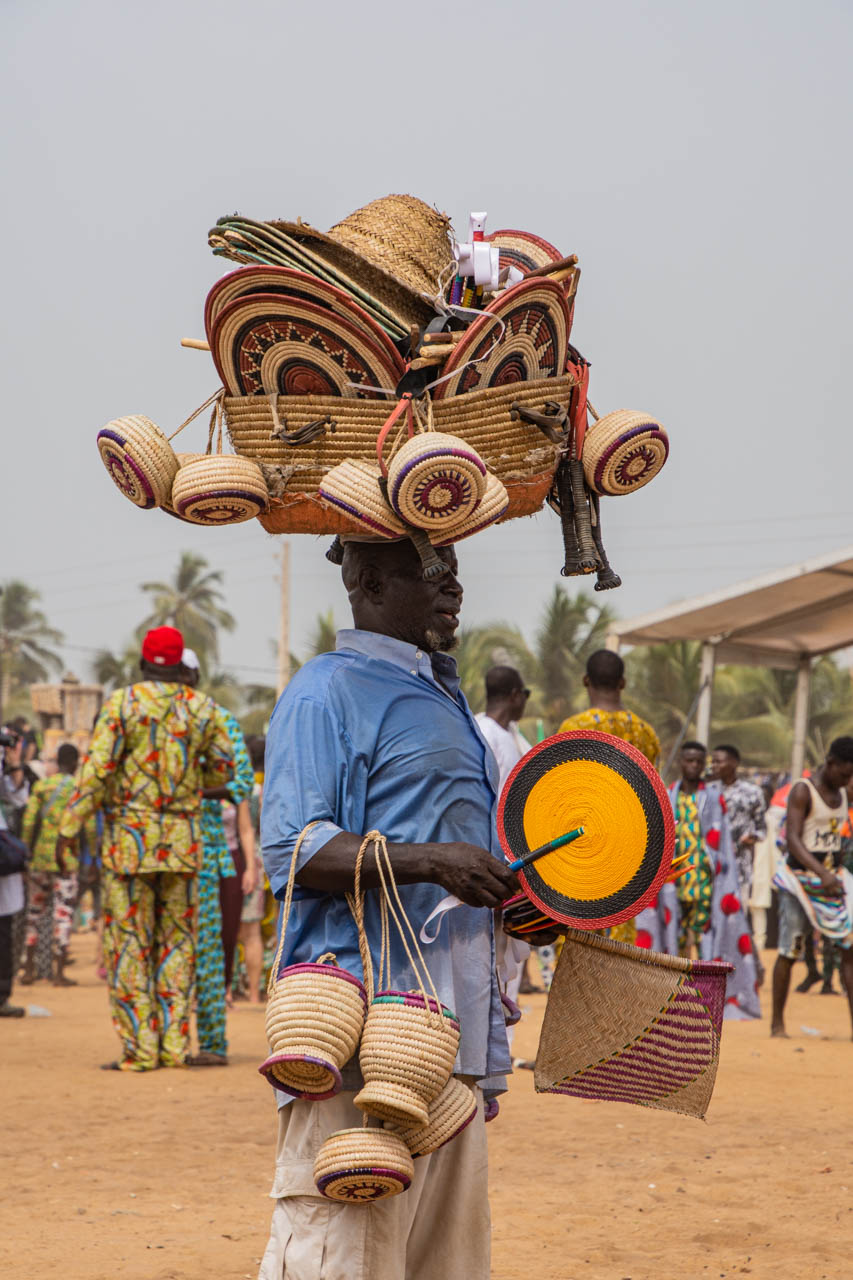An Annual Celebration Not to Be Missed is Benin’s Voodoo Festival in Ouidah Picture colour, music, singing, dancing, and a joyous party attracting national and international visitors. This is…
An Annual Celebration Not to Be Missed is Benin’s Voodoo Festival in Ouidah
Picture colour, music, singing, dancing, and a joyous party attracting national and international visitors. This is not Carnival in Rio de Janeiro or Venice. Add religion and culture, and you have Benin’s Voodoo Festival in Ouidah. With 13 photos to inspire your curiosity, wanderlust, and travel plans, join me in my experience of Benin’s Voodoo Day national celebration.
Voodoo Day in Benin falls on January 10 each year. It is a national holiday celebrating the country’s heritage of the West African religion of Voodoo.
Benin (officially the Republic of Benin) is a sliver of a nation in West Africa on the Atlantic Ocean. It borders Togo to the west, Nigeria to the east, and Burkina Faso and Niger to the north. Ouidah is a city on Benin’s narrow strip of coastline and was the ancient port of the slave trade.
Attending Benin’s Voodoo Festival in Ouidah was my primary reason for travelling to West Africa.
Voodoo is one of Benin’s official religions, while Ouidah is considered the birthplace of Voodoo. It is probably one of the most misunderstood religions in the world. West African Voodoo is a complex religion rooted in healing and doing good to others. It is not the stuff of Hollywood – of witchcraft and black magic or sticking pins in dolls.
I must admit it was curiosity that fed my travel plans to include the Voodoo Festival in Ouidah. I wanted to witness this annual celebration of Benin’s heritage and traditional culture and to experience a unique festival.
My participation at the Voodoo Festival commenced with a visit to Ouidah’s Temple of Pythons – one of Voodoo’s most revered places and home to some 60 pythons. The pythons are a significant symbol for followers of Voodoo. They are not feared but are revered and worshipped. These pythons were said to be docile, which was just as well because they roamed freely. It was here, through a break in the trampling crowd, that I momentarily sighted the Voodoo Pope who had come to pay homage at the Temple of Pythons.
From the Temple of Pythons, the Voodoo Pope led a procession along the historical, 3-kilometre Slave Road to the ‘Door of No Return’ (of slave trade infamy) on Ouidah’s beach on the Atlantic coast. It was on this stretch of sand that the celebrations of the Voodoo Festival truly got underway.
And what a celebration!
With the dignitaries’ speeches over (this took over an hour), it was party time. But first, the spirits and Voodoo gods needed to be appeased with the sacrifice of a goat. The Voodoo Pope carried out this ritual behind a circular wall of blue plastic away from public view. Animal sacrifice is a fundamental element in Voodoo. No Voodoo ceremony is worth its salt without an animal sacrifice in exchange for favours from the spirits.
Immediately following the sacrifice, the Voodoo Pope made his way to his throne in the shadow of the Door of No Return. I say ‘throne’ because the festival hosts referred to him as “His Majesty the Pope”.
With the Voodoo Pope seated, the atmosphere changed. The speeches gave way to vibrant displays of dancing and the throbbing of drums. I witnessed ‘exorcisms’ in which a seemingly possessed person would run away from a group of people, only to be caught, dragged to the ground, and sprinkled with powder. The crowd became particularly excited when coloured haystacks appeared, spinning around the grounds. I learned these ‘haystacks’ are Voodoo spirits known as Zangbeto and are the traditional Voodoo guardians of the night – the Nightwatchmen. They are the unofficial police force and dispensers of justice. I did not envy the human police who battled to keep the crowds from encroaching on dancers and Voodoo spirits.
With so much going on around me, I wandered around aimlessly. I didn’t know which group to stay and watch or where to go next. But I was intent on seeing it all. I moved around the festival for a couple of hours until I decided it was time to sit down and people watch.
Overall, the celebration at the Voodoo Festival in Ouidah was a hive of activity in which people would swarm from one dance display to another. A kaleidoscope of colour from the attire worn by attendees and a cacophony of noise from the frantic pounding of drums dominated the festival. The crowd was buzzing.
But perhaps, the best way to describe the Voodoo Festival and my experience is to share some of my photos with you.
Ouidah’s Voodoo Festival was a never to be forgotten experience.
Disclaimer: This post contains no affiliate links. All views and opinions are my own and non-sponsored. All photos are my own and remain the copyright © of Just Me Travel 2021.
Which festival have you attended that has been a ‘never to be forgotten experience’ for you? Tell us about it. Please leave a comment below to share your thoughts.
Like this post? PIN it for later!
Related posts
For more posts on Africa, visit Just Me Travel: https://justme.travel/category/destinations/africa/
Author’s Note: Please check the latest travel restrictions before planning any trip, and always follow government advice.

















